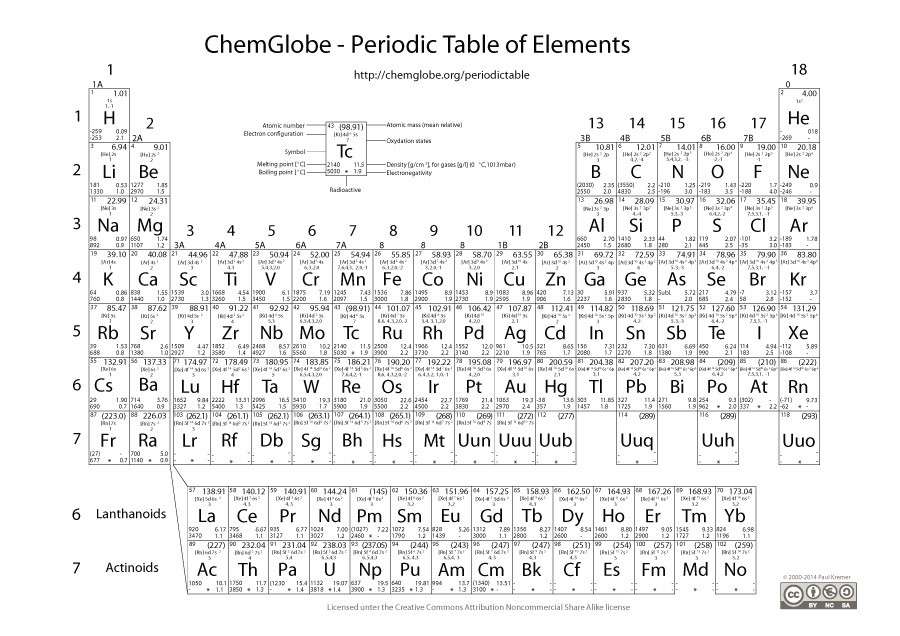

A modern periodic table arranges the elements in increasing order of their atomic numbers and groups atoms with similar properties in the same vertical column ( Figure 2). The modern statement of this relationship, the periodic law, is as follows: the properties of the elements are periodic functions of their atomic numbers. (credit a: modification of work by Serge Lachinov credit b: modification of work by “Den fjättrade ankan”/Wikimedia Commons)īy the twentieth century, it became apparent that the periodic relationship involved atomic numbers rather than atomic masses. (a) Dimitri Mendeleev is widely credited with creating (b) the first periodic table of the elements. Although Mendeleev and Meyer had a long dispute over priority, Mendeleev’s contributions to the development of the periodic table are now more widely recognized ( Figure 1). The discoveries of gallium (1875) and germanium (1886) provided great support for Mendeleev’s work. But Mendeleev went one step further than Meyer: He used his table to predict the existence of elements that would have the properties similar to aluminum and silicon, but were yet unknown. Both published tables with the elements arranged according to increasing atomic mass. Fluorine (F), chlorine (Cl), bromine (Br), and iodine (I) also exhibit similar properties to each other, but these properties are drastically different from those of any of the elements above.ĭimitri Mendeleev in Russia (1869) and Lothar Meyer in Germany (1870) independently recognized that there was a periodic relationship among the properties of the elements known at that time. For example: Li, Na, and K are much more reactive than are Ca, Sr, and Ba Li, Na, and K form compounds with oxygen in a ratio of two of their atoms to one oxygen atom, whereas Ca, Sr, and Ba form compounds with one of their atoms to one oxygen atom. However, the specific properties of these two groupings are notably different from each other. A second grouping includes calcium (Ca), strontium (Sr), and barium (Ba), which also are shiny, good conductors of heat and electricity, and have chemical properties in common.

One such grouping includes lithium (Li), sodium (Na), and potassium (K): These elements all are shiny, conduct heat and electricity well, and have similar chemical properties. Identify metals, nonmetals, and metalloids by their properties and/or location on the periodic tableĪs early chemists worked to purify ores and discovered more elements, they realized that various elements could be grouped together by their similar chemical behaviors.

Predict the general properties of elements based on their location within the periodic table.State the periodic law and explain the organization of elements in the periodic table.Pl.xylabel((5.35+sc)*wcell,1.By the end of this section, you will be able to: Variable elements = [\,Actinoids"R,0.5,0) ) are used as names for color definitions. Some of the properties (e.g., groups like metals / nonmetals, state. The array is built such that the index of an entry equals the proton number //Z//. This script loads a datafile (ptdata.sl) with the symbols, names, and other properties in form of an array of lists.


 0 kommentar(er)
0 kommentar(er)
